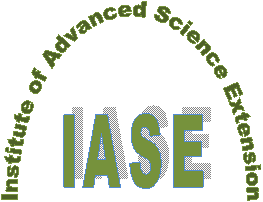International
ADVANCED AND APPLIED SCIENCES
EISSN: 2313-3724, Print ISSN:2313-626X
Frequency: 12
![]()
Volume 6, Issue 1 (January 2019), Pages: 43-50
----------------------------------------------
Original Research Paper
Title: Implementation of the 21st century learning in learning and facilitation of Thirukural in Tamil primary schools
Author(s): Kartheges Ponniah *, Ilangkumaran Sivanadhan, Muniisvaran Kumar, Pooveneswaran Nadarajan
Affiliation(s):
Faculty of Languages and Communication, Sultan Idris Education University, Tanjung Malim, Malaysia
* Corresponding Author.
 Corresponding author's ORCID profile: https://orcid.org/0000-0003-2955-0607
Corresponding author's ORCID profile: https://orcid.org/0000-0003-2955-0607
Digital Object Identifier:
https://doi.org/10.21833/ijaas.2019.01.006
Abstract:
The purpose of this study was to find out the implementation level of the 21st Century Learning Model among teachers and to analyze the impact of it in activities and facilitation of 21st Century Modeling in Thirukkural teaching in Perak state’s Tamil Primary Schools. Qualitative research methods were used in this study to obtain the data. This study involved two Tamil Primary Schools as respondents. Observation in the process of learning and facilitating Thirukkural for Year 5 students was implemented using Malaysian Standards Quality Education Waves 2 (known as SKPMg2) instruments that had been set by the Ministry of Education. The results show that the classroom atmosphere involved in the observation meets the positive elements of a classroom, as recommended by the Ministry of Education Malaysia. However, there are some weaknesses in the availability and application of certain aspects such as 'learning resource center', 'self-access learning' and digital technologies. A fairly narrow classroom and financial factors are the barriers to creating an excellent classroom filled with positiveness. In addition, the findings show that the achievement scores were outstanding for the role of teachers as guards, mentors, managers of learning environments and students’ emotional drive. This score is seen as a great achievement. However, the achievement of scores in the role of teachers as planners, motivators, and appraisers should be further worked out. At the same time, the role of students as active learners also has low scores due to the actions of the passive student actions. Overall, it can be stated that Thirukkural learning and facilitating can be done well based on the 21st Model of Learning, but certain aspects in this model such as the teacher's role to as motivator and student’s role as active learner need to be further improved. The results of this study are expected to help educators and related parties in implementing the learning and facilitation of Thirukkural more effectively, in accordance with the 21st Model of Learning.
© 2018 The Authors. Published by IASE.
This is an
Keywords: 21st century learning, Tamil language, Thirukkural, Learning resource centre, Self-access learning, Digital technologies
Article History: Received 7 August 2018, Received in revised form 12 November 2018, Accepted 13 November 2018
Acknowledgement:
This study was carried out under the Sultan Idris Education University’s Research Grant.
Compliance with ethical standards
Conflict of interest: The authors declare that they have no conflict of interest.
Citation:
Ponniah K, Sivanadhan I, and Kumar M et al. (2019). Implementation of the 21st century learning in learning and facilitation of Thirukural in Tamil primary schools. International Journal of Advanced and Applied Sciences, 6(1): 43-50
Figures
No Figure
Tables
Table 1 Table 2 Table 3 Table 4 Table 5 Table 6 Table 7 Table 8 Table 9 Table 10 Table 11 Table 12
----------------------------------------------
References (6)
- Creswell JW (2012). Educational research: Planning, conducting and evaluating quantitative and qualitative research. 4th Edition, Pearson, Boston, USA. [Google Scholar]
- Hamsari NA and Yahaya A (2012). Peranan motivasi pembelajaran, gaya keibubapaan dan sikap dengan pencapaian akademik. Journal of Educational Psychology and Counseling, 5: 30-57. [Google Scholar]
- Mahamod Z, Ahmad A, Zakaria A, Harmi N, and Farihah NN (2013). Prosiding seminar pascasiswazah pendidikan bahasa melayu dan kesusasteraan Melayu kali pertama 2013. Conference or Workshop Item (Paper), Respositori Universiti Kebangsaan Malaysia, Melayu, Pendidikan, Malaysia. [Google Scholar]
- MEM (2014). Elemen KBAT dalam kurikulum. Ministry of Education Malaysia [Kementerian Pendidikan Malaysia], Bahagian Pembangunan Kurikulum, Kuala Lumpur, Malaysia. [Google Scholar]
- Metiri Group (2003). Technology in schools: What the research says. Commissioned by Cisco Systems. Available online at: http://www.cisco.com [Google Scholar]
- Munirah HB, Abdul RA, and Noria MY (2015). Pengajaran dan pembelajaran sejarah abad ke-21: isu dan cabaran. In the 7th International Seminar on Regional Education, 1: 324-335. [Google Scholar] PMid:26414782

